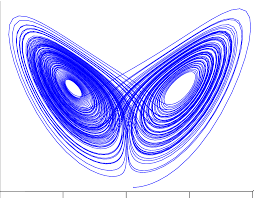Chaos, predictability and non-linarities group
The group has been part of the
Department of Atmospheric Physics in various forms for many years and is
currently divided into two subgroups. One subgroup focuses on the limits to
the success of weather and climate prediction. It examines the aspects
affecting the accuracy of the forecast and the possibilities of their
improvement. Topics are studied using both chaos theory and low- and
high-dimensional numerical models simulating the atmosphere and other subsystems
of the climate system. The second subgroup then focuses on issues of
non-linearity and chaos in the medium-term and long-term variability of the
climate system, especially in relation to long-range links of modes of
internal climate variability to local meteorological conditions in different
parts of the world.
Group leader: Mgr. Hynek Bednář Ph.D..
Key members: doc.
Mgr. Jiří Mikšovský, Ph.D., RNDr. Aleš Raidl, Ph.D.

The group's research topics include
- Investigating the growth of initial condition error in systems with space-time scales.
- Analysis of the growth mechanism of the systematic error of models and determination of the significance of this error for predictability.
- Determining the influence of the error of the boundary conditions arising as a result of connecting the atmosphere with other subsystems.
- Exploring the possibilities of extending predictability beyond the generally accepted limit for prediction.
- Analysis of nonlinearity of spatial links and mutual interactions of internal climate oscillations (especially NAO, ENSO, PDO, AMO)
- Implementation of nonlinear coupling models to refine downscaling techniques and bias correction of global and regional climate model outputs
Research Tools
- Lorenz-type low-dimensional models (https://en.wikipedia.org/wiki/Lorenz_system, https://en.wikipedia.org/wiki/Lorenz_96_model).
- Global numerical forecast models of the European Center for Medium-Range Weather Forecasts (https://www.ecmwf.int/).
- Numerical forecast models from the Sub-seasonal to seasonal (S2S) prediction systems database (http://www.s2sprediction.net/).
- Linear and non-linear regression models combined with surrogate data generators
- Techniques for quantifying nonlinear correlations
Projects
Currently, the group participates on project OP JAK Georizika (comprehensive quantification of anthropogenic and natural geohazards). Among the completed projects, this is the GAČR 19–16066S project (Nonlinear interaction and information transfer in complex systems with extreme events).
International and national cooperations
- Max Planck Institute for the Physics of Complex Systems (https://www.pks.mpg.de), Dresden – Prof. Holger Kantz
- Institute of Informatics, Czech Academy of Sciences (https://www.cs.cas.cz), Praha – RNDr. Milan Paluš DrSc.
Publications
- Bednář, H. and Kantz, H.: Analysis of model error in forecast errors of Extended Atmospheric Lorenz' 05 Systems and the ECMWF system, Geosci. Model Dev., https://doi.org/10.5194/egusphere-2023-1464, 2024.
- Bednář, H. and Kantz, H.: Prediction Error Growth in a more Realistic Atmospheric Toy Model with Three Spatiotemporal Scales, Geosci. Model Dev., 15, 4147–4161, https://doi.org/10.5194/gmd-15-4147-2022, 2022.
- Bednář, H., Raidl, A., and Mikšovský, J.: Recalculation of error growth models’ parameters for the ECMWF forecast system, Geosci. Model Dev., 14, 7377–7389, https://doi.org/10.5194/gmd-14-7377-2021, 2021.
- Bednář, H., Raidl, A. and Mikšovský, J.: Time Evolution of Initial Errors in Lorenz's 05 Chaotic Model, The Scientific World Journal, 1–9, https://doi.org/10.1155/2015/729080, 2015.
- Bednář, H., Raidl, H., and Miksovsky, J.: Initial Error Growth and Predictability of Chaotic Low-dimensional Atmospheric Model, IJAC, 11, 3, 256–264, https://doi.org/10.1007/s11633-014-0788-3, 2014.
- Bednář, H., Raidl, A. and Mikšovský, J.: Initial Errors Growth in Chaotic Low-dimensional Weather Prediction Model, Advances in Intelligent Systems and Computing, 210, 333–342, https://doi.org/10.1007/978-3-319-00542-3_34, 2013.



